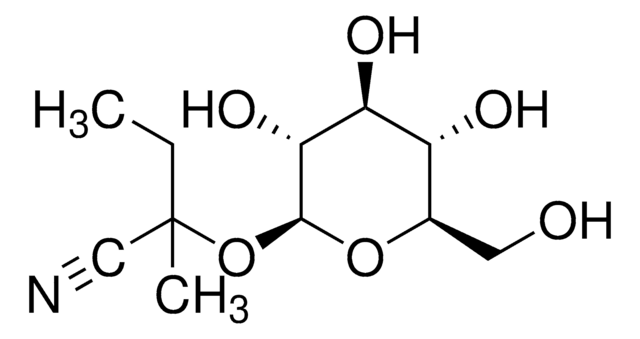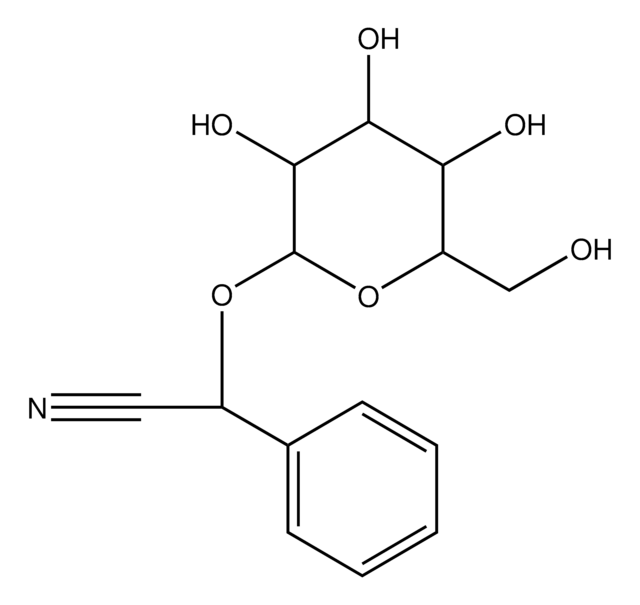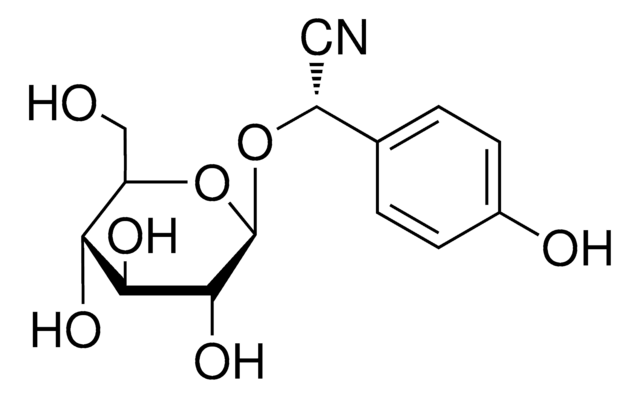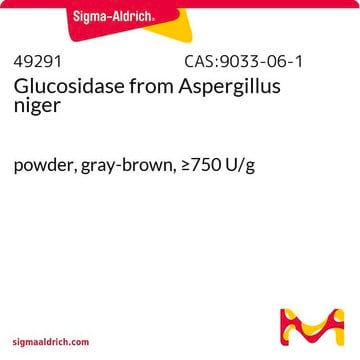68264
α-Hydroxyisobutyronitrile β-D-glucopyranoside
≥97% (HPLC)
동의어(들):
α-Hydroxyisobutyronitrile β-D-glucose, 2-(β-D-Glucopyranosyloxy)-2-methylpropionitrile, Linamarin
About This Item
추천 제품
생물학적 소스
synthetic
분석
≥97% (HPLC)
형태
solid
광학 활성
[α]/D -26.5±2.0°, c = 1 in H2O
기술
HPLC: suitable
색상
white to off-white
저장 온도
2-8°C
SMILES string
CC(C)(O[C@@H]1O[C@H](CO)[C@@H](O)[C@H](O)[C@H]1O)C#N
InChI
1S/C10H17NO6/c1-10(2,4-11)17-9-8(15)7(14)6(13)5(3-12)16-9/h5-9,12-15H,3H2,1-2H3/t5-,6-,7+,8-,9+/m1/s1
InChI key
QLTCHMYAEJEXBT-ZEBDFXRSSA-N
유사한 제품을 찾으십니까? 방문 제품 비교 안내
애플리케이션
생화학적/생리학적 작용
포장
기타 정보
신호어
Warning
유해 및 위험 성명서
Hazard Classifications
Acute Tox. 4 Oral - Eye Irrit. 2 - Skin Irrit. 2 - STOT SE 3
표적 기관
Respiratory system
Storage Class Code
11 - Combustible Solids
WGK
WGK 3
Flash Point (°F)
Not applicable
Flash Point (°C)
Not applicable
개인 보호 장비
dust mask type N95 (US), Eyeshields, Gloves
시험 성적서(COA)
제품의 로트/배치 번호를 입력하여 시험 성적서(COA)을 검색하십시오. 로트 및 배치 번호는 제품 라벨에 있는 ‘로트’ 또는 ‘배치’라는 용어 뒤에서 찾을 수 있습니다.
자사의 과학자팀은 생명 과학, 재료 과학, 화학 합성, 크로마토그래피, 분석 및 기타 많은 영역을 포함한 모든 과학 분야에 경험이 있습니다..
고객지원팀으로 연락바랍니다.






